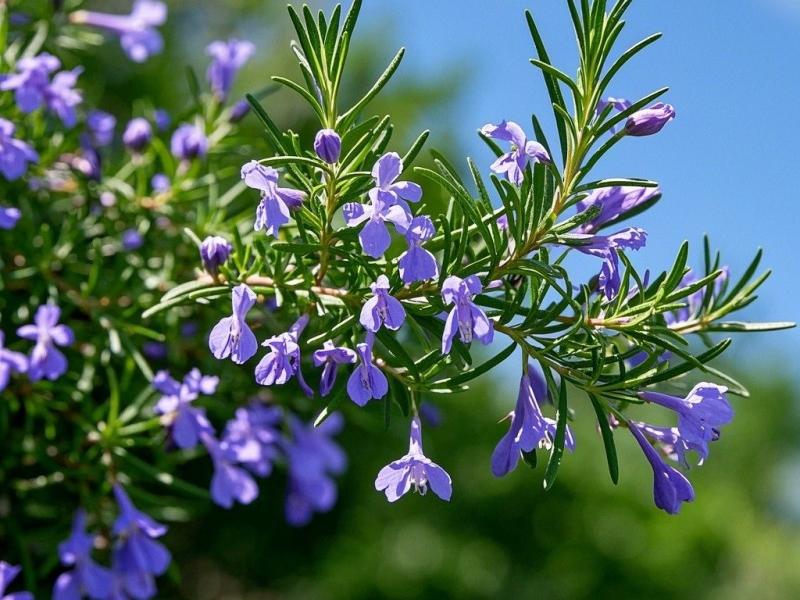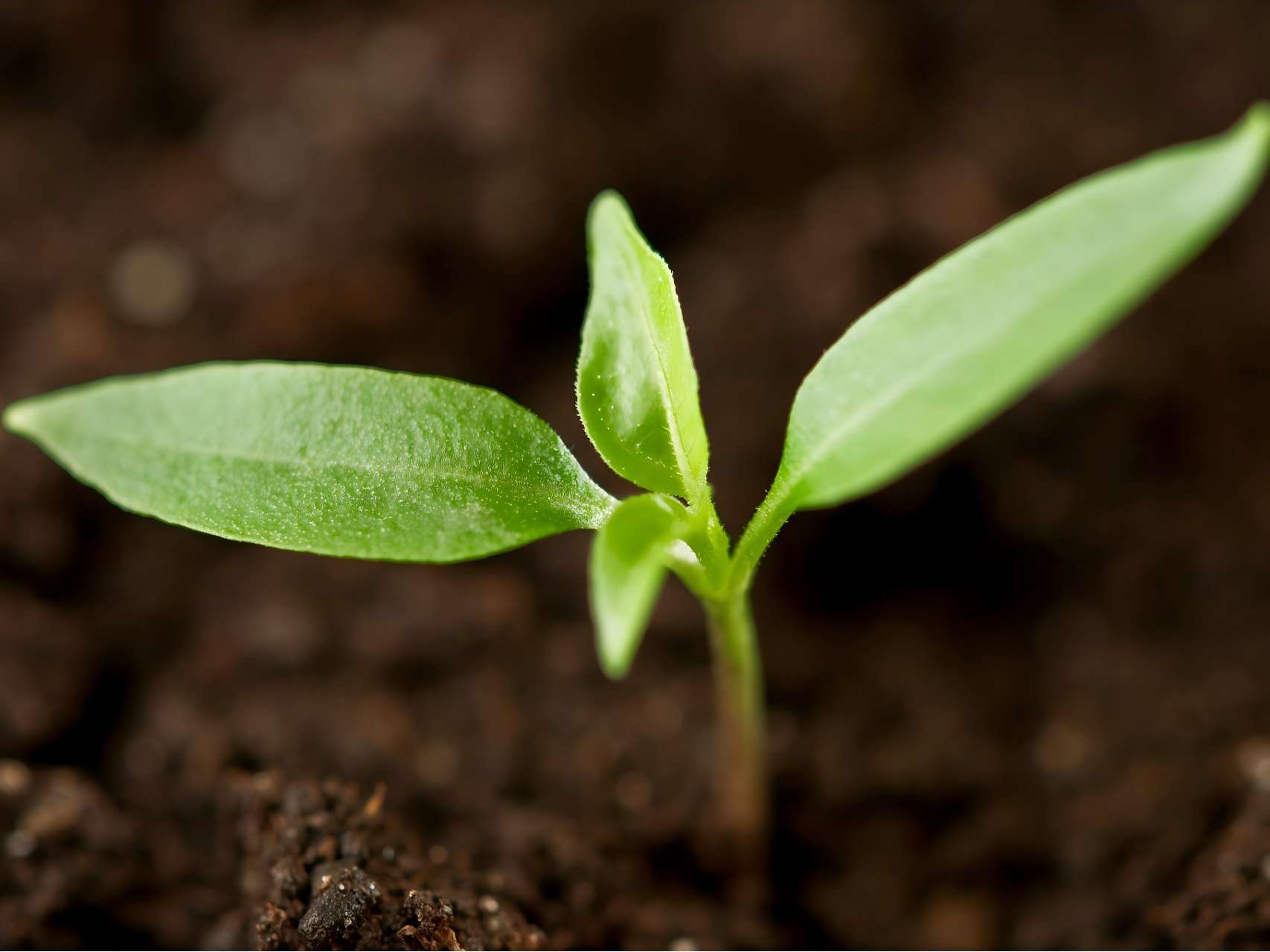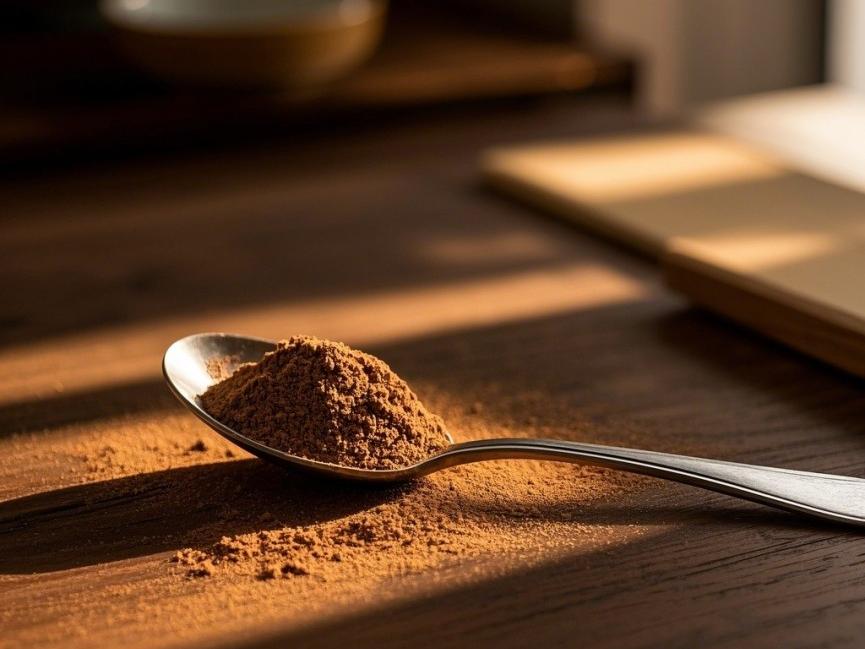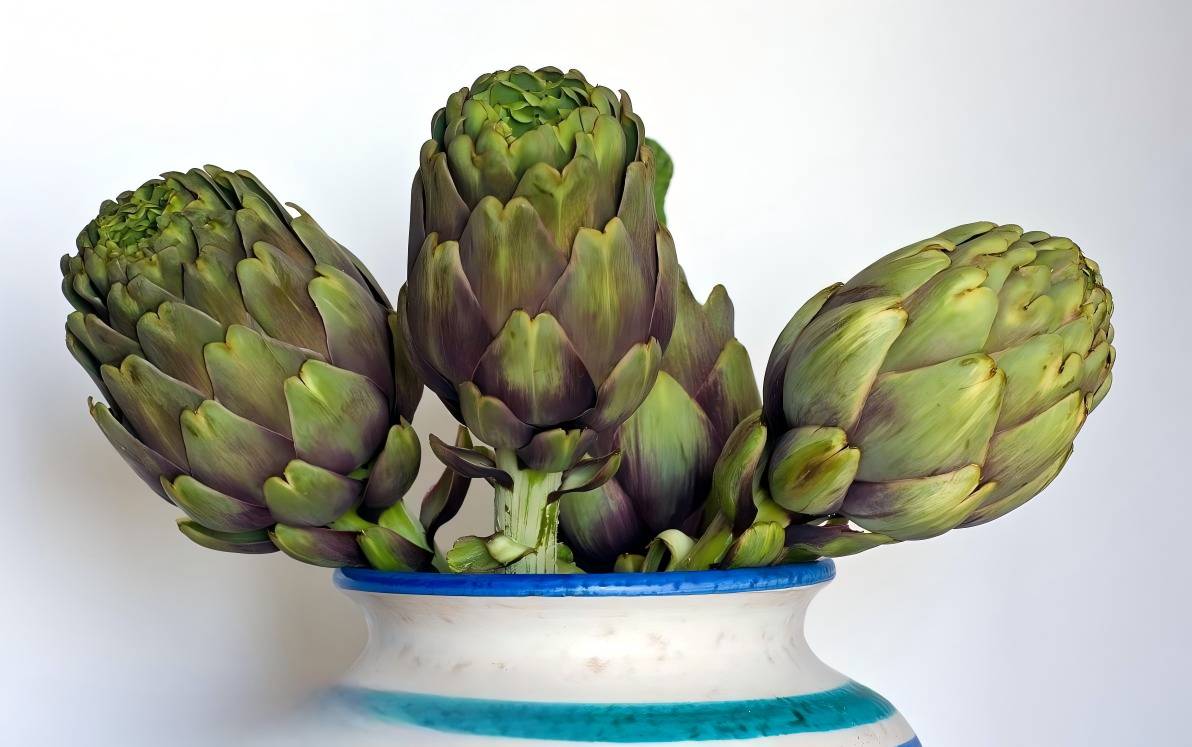How About Artichoke in Hindi?
Artichoke in Hindi, scientific name Cynara scolymus L., is a perennial herb in the Asteraceae family. Artichoke is a health vegetable rich in many high-nutrition ingredients, and is known as the “vegetable king”. It is sold as a high-end vegetable in the international market. In Hindi, artichokes are an ancient perennial plant native to the Mediterranean coast in the 1st century AD. They were spread to the southern Mediterranean by the Arabs in the Middle Ages[1]. They were introduced for cultivation in China from France in the 19th century and have been cultivated for more than 100 years. They are mainly cultivated in small quantities in Shanghai, Zhejiang, Yunnan, Guangxi, Hubei and other places[2].
The edible parts of the artichoke are the fleshy receptacle of the flower bud and the plump bracts of the receptacle. 80% is used for fresh consumption and 20% is used to make canned products. Due to the increasing import and consumption of artichokes in developed countries such as Western Europe and the United States, canned products are often in short supply on the international market, with an annual demand for canned artichokes of more than 10 × 104 t. The discarded part, artichoke leaves, has a long history of medicinal use as part of Mediterranean folk medicine. Studies have found that artichoke leaves contain a variety of functional compounds such as caffeoylquinic acids and their derivatives, flavonoids and terpenes, which have the effects of treating indigestion, promoting bile secretion, anti-oxidation and lowering cholesterol.
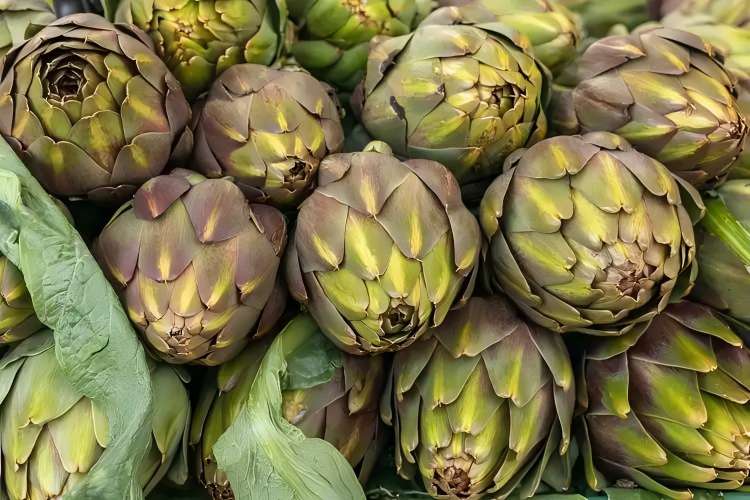
1 Morphological characteristics of artichoke
The artichoke root has a taproot system, is fleshy, and has a main root that penetrates deep into the soil. It has 3–5 lateral roots and is often distributed in the 20–40 cm soil layer. The upright stem is a shortened stem in the first year, and after the second year, the stem elongates and buds appear. The basal axillary buds are prone to sprouting and dividing. Secondary branches grow from the main stem, with buds at the tips. The plant grows to about 1 m in height and 1.4 m in spread. The leaves are large and fat, slightly broadly lanceolate, deeply pinnately lobed, green, densely covered in white hairs, with spiny teeth at the tip of the lobes and thick petioles. The first 6 leaves are entire, the 6th to 9th leaves are pinnately deeply lobed, and the leaves after that are pinnately deeply lobed and coarsely serrate. After flowering, the front leaves are densely arranged on shortened stems, and after flowering, the flowering branches bear lobed leaves. The flowers are all tubular flowers with reddish-purple, bisexual, tubular flowers with 5 stamens and aggregated anthers; the sepals are reduced to crown hairs; the ovary is 1-loculed and inferior. The involucre is ovate or subglobose, the bracts smooth, hard and leathery, and the base fleshy. The fruit is an achene, dark brown, grayish white or mottled, long-ovoid, with a thousand-grain weight of 40–50 g and a germination rate of about 7 years [3–4].
2 Active ingredients of artichoke extract
Domestic and foreign studies have shown that artichoke extract contains a variety of functional ingredients such as di-caffeoyl quinic acid and its derivatives, flavonoids and terpenes, such as chlorogenic acid, artichoke acid, luteolin 7-O-glucoside, apigenin 7-O-glucoside and cynarin. The functional ingredients of different parts of the artichoke are roughly the same, but the content differs.
Katrin et al. [5] used HPLC-DAD-ESI-MSn technology to qualitatively and quantitatively analyze the components of artichoke extracts. A total of 22 compounds were identified, including 11 caffeoylquinic acids and 8 flavonoids. The main components were caffeic acid, 1-caffeoyl quinic acid, 3-caffeoyl quinic acid, 4-caffeoyl quinic acid, 5-caffeoyl quinic acid, 1,3-di-O-caffeoyl quinic acid, 3,4-di-O-caffeoyl quinic acid, 3,5-di-O-caffeoyl quinic acid, 1, 5 - di-caffeoyl quinic acid, 4, 5- di-caffeoyl quinic acid, luteolin- 7 -O-glucoside, luteolin- 7 -O-rutinoside, apigenin-7-glucoside, apigenin-7-rutinoside, naringenin rutinoside (naringenin rutin), naringenin glucoside. Liu Rong et al. [6] isolated two phenolic glycosides, one of which is a new compound. After spectroscopic analysis, its structure was determined to be 2-methoxy-4-(2,3-dihydroxy-propionyl)-phenyl-1-O-(6'-O-galloyl)-β-D-glucopyranoside (1).
Wan g M et al. [7] isolated and purified three varieties of artichoke buds and leaves, and identified six flavonoids by mass spectrometry and nuclear magnetic resonance, namely, naringenin glucoside, naringenin apioside, apigenin-7-O-glucoside, apigenin-7-O-rutinoside, apigenin-7-O-glucoside, and apigenin-7-O-rutinoside.
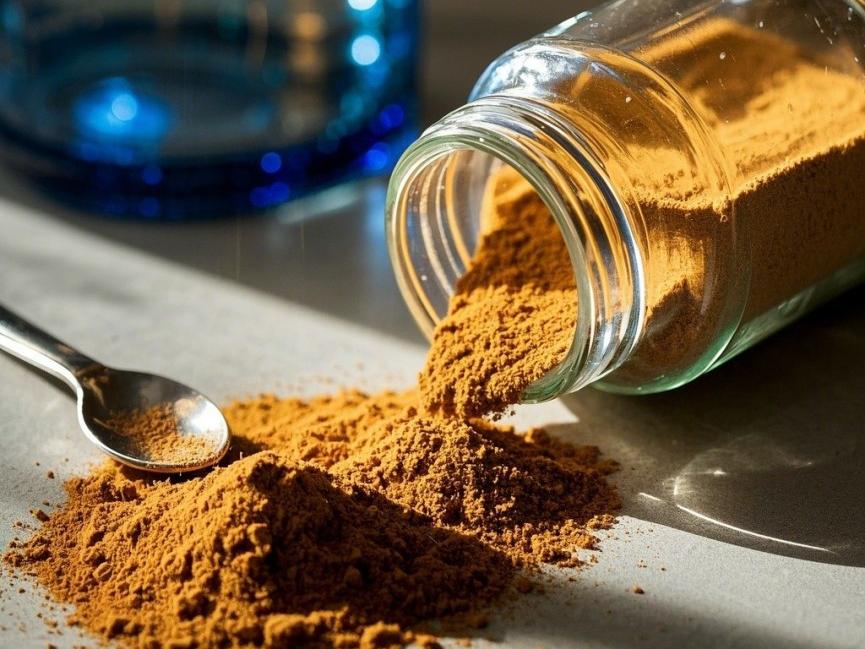
Schitz K et al. [8] analysed the functional active ingredients of artichoke extract by HPLC-MS. The results showed that the artichoke flower bulb contains a variety of anthocyanin active ingredients, namely cynarin-3,5-dioxy-glucoside, and cynarin-3,5-malonyl-glucoside.
In addition, Shi Moda H et al. [9] isolated six terpene compounds from methanol extracts of artichoke leaves, namely aguerin B, groshei min, Cynaracoloside A-C and Cynaropicrin; Liu Rong et al. [10] isolated two sesquiterpene lactones from artichoke leaves and determined their structural formulas by spectroscopic methods. One of them was found to be a new compound with the structure of 3β,8α,11α, 13-tetrahydroxy-10(14)-guaiadien-1α,4β,5α,6β-hydro-6α,12-lactone. Li X et al. [11] isolated two new sesquiterpene lactones, cynarinins A and B, as well as 7 known compounds Cynarascoloside C, Cynaropicrin, Aguerin B, Groshei min, Dehydrocynaropicrin, Aguerin A and Cynart riol 9 terpene compounds. Liu Huiwen [12] detected the asparagine component of artichoke by ion exchange column and fluorescence detector, pH gradient elution, and o-phthalaldehyde-2-mercaptoethanol post-column derivatization.
At present, the research on the functional components of artichoke in China is still in its infancy, mainly detecting the content of chlorogenic acid, artichokein, and asparagine, and the results are often different. There has been more research on artichoke abroad, and qualitative and quantitative analyses have been carried out on its caffeoylquinic acid, di-caffeoylquinic acid and flavonoid components. Haus ler M[13] used high-phase liquid chromatography to quantitatively analyze 11 components in 12 artichoke extracts, showing that the highest content of caffeoylquinic acid was 0. 48%~4. 24%, and the content of flavonoids was 0.03% to 0.52%. The highly variable content of polyphenolic compounds is dependent on the production process of the artichoke extract and the origin of the plant material.
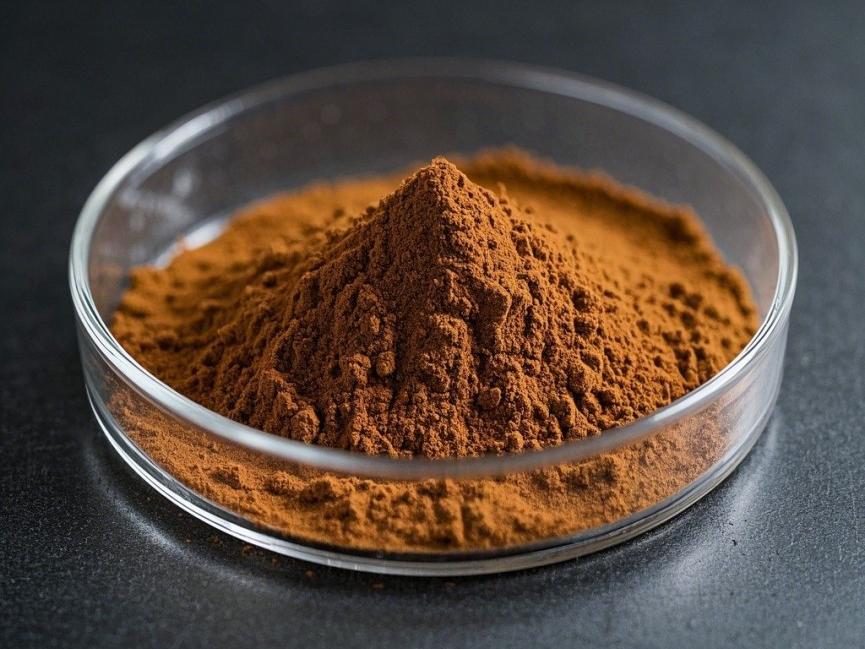
Sara Lombardo[14] studied the functional component content of artichoke by HPLC-DAD-ESI /MSn qualitative and quantitative analysis of 19 polyphenols in different parts of the head of different genotypes of artichoke (Sicily) at different harvest times. The results showed that the content of functional components of artichoke is related to the variety source and the climatic conditions of cultivation. Artichoke with high content of chlorogenic acid and apigenin-7-O-glucuronide can be used as an extraction source.
3 Pharmacological efficacy of artichoke
3. 1 Antioxidant function
Studies on the antioxidant function of artichoke often focus on leaf extracts. Experimental studies have shown that artichoke water and alcohol extracts have the ability to resist free radicals and inhibit lipid peroxidation. The main antioxidant active ingredients are compounds such as artichoke, caffeic acid, chlorogenic acid and luteolin. Artichoke extracts can effectively inhibit the inflammatory factors and low-density lipoprotein oxidation induced by oxidative stress. Jimenez-Escrig A et al. [15] evaluated the antioxidant effect of artichoke by measuring its ability to scavenge DPPH, reduce ferric iron (FRAP), and inhibit the oxidation of human low-density lipoprotein (LDL) catalyzed by Cu in vitro. The results showed that the antioxidant capacity of artichoke extract was comparable to that of VC and VE, and it had a good effect on inhibiting the oxidation of LDL.
Miccadei S[16] evaluated the antioxidant capacity of artichoke water extract by exposing rat hepatocytes and human hepatoma He pG2 cells to H2O2, adding artichoke extract, chlorogenic acid and N, N -diphenyl-1, 4-phenylenediamine (DPPD) for treatment, and measuring the intracellular glutathione and malondialdehyde levels. The results showed that artichoke was able to protect cells from oxidative stress damage caused by glucose oxidase, with the same effect as DPPD.
Gi bhardt R et al. [17] studied the antioxidant capacity and protective effect of an artichoke leaf water extract by exposing primary rat hepatocytes to tert-butyl hydroperoxide or cumyl hydroperoxide. The results showed that an aqueous extract of 0.001 mg/mL reduced the content of MDA, while also reducing the loss of GSH and the leakage of glutathione disulfide (GS SG) cells. The antioxidant active ingredients chlorogenic acid and artichoke could maintain trypsin activity, indicating that artichoke extract has antioxidant and protective potential.
Pérez-García F et al. [18] used flow cytometry and the fluorescent probe dichlorodihydrofluorescein diacetate to investigate the effect of artichoke extract on the antioxidant activation of human leukocytes. They found that the extract exerted antioxidant activity in a concentration-dependent manner, and that the active ingredients were artichoke glycosides, caffeic acid, chlorogenic acid and 3',4',5',7-tetrahydroxyflavone (luteolin).
Zapolska D et al. studied the effects of the ethanol extract and aqueous extract of artichoke leaves on the oxidative stress protection of monocytes and endothelial cells, and found that both extracts inhibited the production of reactive oxygen species in monocytes and endothelial cells under basal and stressed conditions in a dose-dependent manner. The results showed that artichoke extracts have significant protective effects against oxidative stress in endothelial cells and monocytes caused by OX-LDL and inflammatory mediators.
3. 2 Cholesterol-lowering
Numerous studies have shown that artichoke extract can regulate human lipid metabolism by lowering cholesterol and endogenous triglycerides in the body. Bile is the main way to eliminate cholesterol, and artichoke extract can lower the cholesterol content in the human liver and serum by promoting bile secretion. At the same time, many studies have shown that artichoke extract can directly affect the synthesis of endogenous cholesterol. Pérez-García F emphasized that in vitro experiments have shown that artichoke extract can assist in the esterification of serum cholesterol, and the effect on atherosclerotic plaques has also been observed. Prezi osi P[19] studied the effect of artichoke on rabbit serum cholesterol by intravenously injecting artichoke and caffeic acid into rabbits. The study showed that at an injection dose of more than 100 mg/kg, cholesterol was significantly reduced 4–6 h after injection and continued to be reduced for more than 72 h. These two compounds may inhibit cholesterol synthesis in the liver, rather than directly reducing the ability of serum cholesterol to dissolve or esterify [20].
Gebhardt R [21] incubated artichoke extract with β-glucosidase to enhance its inhibitory effect on cholesterol synthesis. The results showed that artichoke glycosides inhibit cholesterol synthesis by acting on β-glucosidase and hydrolyzing 3',4',5',7-flavone to release 3',4',5',7-flavone. It was found that the activity of the enzyme in liver cells can convert artichoke glycosides into aglycones, while He pG2 cells cannot, as measured by glucosidase in He pG2 cells and rat liver cells. Bundy R[22] investigated 131 healthy adults affected by mild to moderately high hypercholesterolemia. The volunteers were divided into 2 groups, each receiving 1280 mg of artichoke extract daily. After 12 weeks, the serum cholesterol level decreased by 4.2% compared to the control group, which was a significant difference. However, there was no significant difference in the improvement of their sense of well-being. The lack of standardized methods and materials in the studies makes it impossible to draw a credible conclusion from the many different results. However, it is certain that all studies show that artichoke extract can improve cholesterol and triglyceride levels.
3. 3 Effect on the digestive system
3.3.1 Treats indigestion
In Europe, artichoke is often used to treat patients with indigestion. In a randomized clinical trial, Holtmann G et al. [23] divided 247 patients with functional dyspepsia (FD) into two groups, one given artichoke tablets and the other given a placebo. The total score was used as the evaluation index. The data of 244 patients were statistically analyzed, and it was found that the symptoms improved significantly after taking artichoke tablets. Kraft K [24] found that symptoms such as bloating and nausea were reduced after taking artichoke extract for 4 to 6 weeks in several hundred people with varying degrees of indigestion. Modern medical research has shown that artichoke extract can promote bile secretion and treat indigestion. In a clinical trial, 20 male patients with acute or chronic metabolic disorders were randomly divided into two groups: one was the control group and the other was given artichoke extract. The results showed that the bile secretion in the artichoke extract group increased, which was significantly different from the control group, and no side effects were observed.
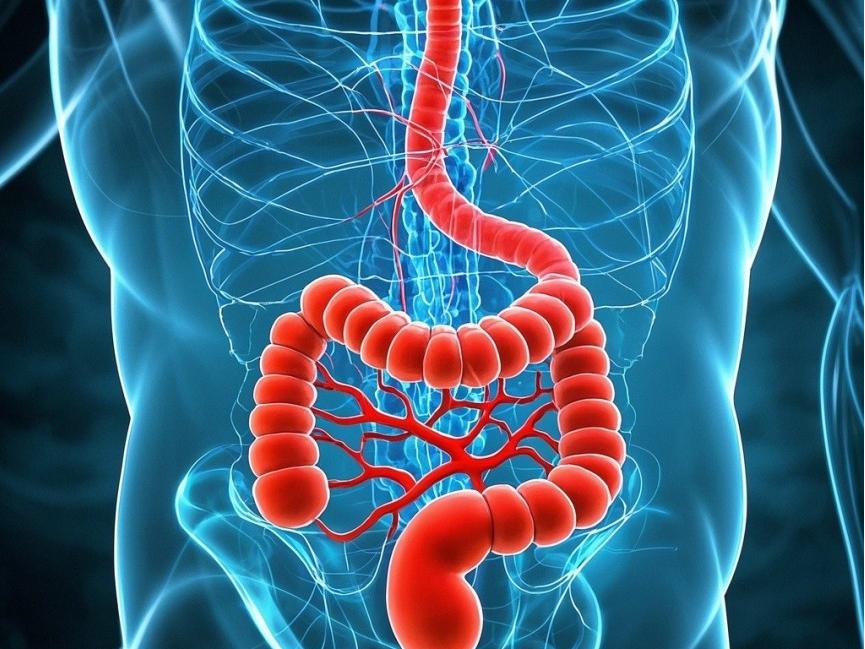
3.3.2 Treatment of irritable bowel syndrome (IBS)
Artichoke extract has a good therapeutic effect on FD, so the researchers hoped to improve the symptoms of irritable bowel syndrome (IBS) by using artichoke extract. After 6 weeks of treatment with artichoke extract, IBS symptoms improved significantly, and 96% of patients had a treatment effect that was better than or at least equivalent to previous treatments. The patients tolerated it well, and the trial proved that artichoke extract has great advantages in reducing IBS symptoms [25]. Bundy R et al. [26] found that after 2 months of treatment with artichoke extract, the incidence of IBS decreased by 26.4% and the symptoms of diarrhea or constipation improved significantly in 208 adult IBS patients. After treatment, the total symptom score of the Nepean Dyspepsia Index (NDI) decreased significantly by 41%, and the NDI quality of life (QOL) score improved significantly by 20%, thus demonstrating that artichoke extract can relieve TBS symptoms and improve IBS quality of life.
3.3.3 Choleretic effect
Gebhardt R[27] studied the effect of artichoke on bile secretion by using primary rat hepatocytes and bile-producing fluorescent compounds in vitro. Artichoke extract was administered to Wistar rats for 7 weeks, and then the rats were anaesthetised to study the effect of artichoke extract on the formation of bile components and bile flow. It was found that artichoke extract, similar to dehydrocholic acid (DHCA), can increase bile flow, can significantly increase the concentration of total bile acids, and has a more significant effect than DHCA, but has no significant effect on phospholipids and cholesterol. Gebhard R et al. [28] exposed primary rat hepatocytes to taurine bile acid medium to inhibit bile secretion, and added artichoke extract at different concentrations. It was found that when bile acids were added together, they could prevent the abnormal deformation of the bile duct membrane caused by taurine bile acid. Pretreatment of liver cells with artichoke extract had a similar effect, confirming that artichoke extract can promote bile secretion and protect the liver. This may be related to the flavonoids and their metabolites it contains.
4 Prospects
Artichoke is rich in various functional ingredients such as caffeoylquinic acids, flavonoids and terpenes, and has significant physiological functions. It has been used as a medicine in Europe since ancient times. However, in the mid-19th century, the information on the use of artichoke as a medicine was interrupted. At the beginning of the 20th century, French scientists proposed that artichoke was a potential medicine for the treatment of liver disease. In 1960, the active ingredient in artichoke, artichin, which protects the liver, was discovered. Within a very short space of time, its chemical structure was identified and it was chemically synthesized. In recent decades, the medicinal value of an artichoke leaf water extract has once again gained the attention of academia. It is officially recognized as safe and effective; the extract has been used as a dietary supplement for the treatment of hyperlipidemia [29].
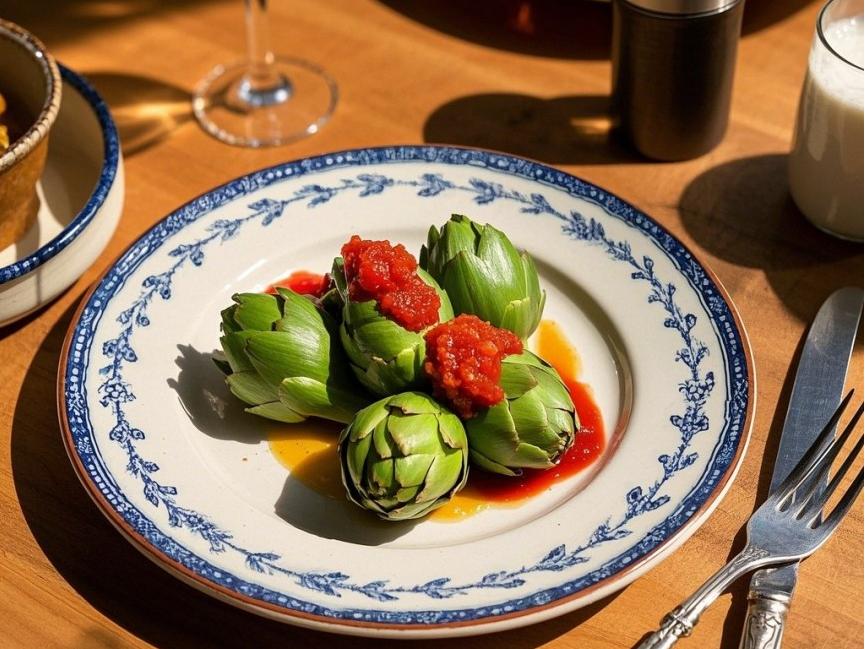
In addition, the European Pharmacopoeia has allowed artichoke to be used as a stimulant for protecting the liver and improving appetite, especially in children. Artichoke leaves, whether fresh or dried, have been included in the relevant pharmacopoeia as an official European herbal medicine for the treatment of gallbladder, diuretic, cholesterol-lowering and liver-protective effects. In China, artichoke is a high-end vegetable that has been cultivated from abroad. It has gradually been accepted and promoted by some processing enterprises in China, and many corresponding by-products have been researched and developed. The demand for artichoke health food, artichoke tea bags, artichoke dried powder, and artichoke extracts is also increasing year by year. It can be seen that artichoke has broad research and development space and should be vigorously promoted.
Reference
[1]Ernst E. The artichoke a welfare plant with history and future prospects [J]. Naturamed ,1995 ,10 :30-35.
[2] Bai Xue, Zhang Jianli, He Hongju. Nutrition and health benefits of artichoke [J]. Chinese Food and Nutrition, 2006 (11): 47-48.
[3] He Yongnian, Zhang Boping, Gu Sanjun, et al. Preliminary report on the introduction and trial cultivation of artichokes [J]. Chinese Vegetables, 1991 (3): 14.
[4] Han Jiayi, Yuan Wei, Han Shu. Introduction, cultivation and development of high-quality western vegetables artichokes [J]. Yunnan Agricultural Science and Technology, 1995 (5): 11-13.
[5]Schütz K ,Persike M ,Carle R ,et al. Characterization and quantification of anthocyanins in selected artichoke (Cynara scolymus L).cultivars by HPLC -DAD -ESI -MSn [ J]. Analytical and Bioanalytical Chemistry,2006,384 (7/8): 1 511-1 517.
[6] Liu R. Phenolic glycoside compounds in artichoke leaves [J]. Yunnan Botanical Research, 2009, 31 (1): 89-92.
[7] Wang M ,Simon J E ,Aviles I F ,et al. Analysis of an- tioxidative phenolic compounds in artichoke (Cynara scoly- mus L). [J]. Journal of Agricultural and Food Chemistry, 2003 ,51 (3):601-608.
[8]Schütz K ,Kammerer D ,Carle R ,et al. Identification and quantification of caffeoylquinic acids and flavonoids from artichoke (Cynara scolymus L). heads , juice , and po- mace by HPLC-DAD-ESI/MSn [J]. Journal of Agricultural and Food Chemistry ,2004 ,52 (13):4 090-4 096.
[9]Shimoda H ,Ninomiya K ,Nishida N ,et al. Anti-Hyper- lipidemic sesquiterpenes and new sesquiterpene glycosides from the leaves of artichoke (Cynara scolymus L). struc- ture requirement and mode of action [ J]. Bioorganic & Medicinal Chemistry Letters ,2003 ,13 (2):223-228.
[10] Liu R. A new sesquiterpene lactone from Artemisia apiacea leaves [J]. Yunnan Botanical Research, 2009, 31 (4): 383-385.
[11]Li X ,Qian P ,Liu Z ,et al. Sesquiterpenoids from Cynara scolymus [J]. Heterocycles ,2005 ,65 (2):287-291.
[12] Liu Huiwen. Determination of asparagine in artichoke by high performance liquid chromatography [J]. Modern Scientific Instruments, 2006 (6): 107-108.
[13]Husler M ,Ganzera M ,Abel G ,et al. Determination of caffeoylquinic acids and flavonoids in Cynara scolymus L. by high performance liquid chromatography [ J]. Chro- matographia ,2002 ,56 (7/8):407-411.
[14]Lombardo S,Pandino G,Mauromic G,et al. Influence of genotype, harvest time and plant part on polyphenolic compo- sition of globe artichoke [Cynara cardunculus L. var. scoly- mus (L). Fiori][J]. Food Chemistry,2010,119 (3): 1 175-1 181.
[15]Jimenez-Escrig A ,Dragsted L O ,Daneshvar B ,et al. In vitro antioxidant activities of edible artichoke ( Cynara scolymus L). and effect on biomarkers of antioxidants in rats [ J]. Journal of Agricultural and Food Chemistry, 2003 ,51 (18):5 540-5 545.
[16]Miccadei S ,Di Venere D ,Cardinali A ,et al. Antioxida- tive and apoptotic properties of polyphenolic extracts from edible part of artichoke (Cynara scolymus L). on cultured rat hepatocytes and on human hepatoma cells [J]. Nutrition and Cancer,2008 ,60 (2):276-283.
[17]Gebhardt R. Antioxidative and protective properties of extracts from leaves of the artichoke (Cynara scolymus L). against hydroperoxide -induced oxidative stress in cultured rat hepatocytes [J]. Toxicology and Applied Pharmacology, 1997 ,144 (2):279-286.
[18]Pérez -García F , Adzet T , Caigueral S. Activity of artichoke leaf extract on reactive oxygen species in human leukocytes [J]. Free Radical Research ,2000 , 33 (5): 661-665.
[19]Preziosi P ,Loscalzo B. Pharmacological properties of 1,4 - dicaffeylquinicacid , the active principle of Cynara scoly - mus [J]. Arch Int Pharmacodyn ,1958 ,117 :63-80.
[20]Mancini M , Oriente P , D'andrea L. Hypocholesterolemic effects of quinic acid 1,4 - dicaffeate in atherosclerotic patients [C]. Proceedings of the Sym. ,1961 :533-537.
[21]Gebhardt R. Inhibition of cholesterol biosynthesis in primary cultured rat hepatocytes by artichoke (Cynara scolymus L). extracts [ J]. Journal of Pharmacology and Experimental Therapeutics ,1998 ,286 (3):1 122-1 128.
[22]Bundy R ,Walker A F ,Middleton R W ,et al. Artichoke leaf extract (Cynara scolymus) reduces plasma cholesterol in otherwise healthy hypercholesterolemic adults : A ran- domized ,double blind placebo controlled trial [ J]. Phy- tomedicine ,2008 ,15 (9):668-675.
[23]Holtmann G , Adam B , Haag S , et al. Efficacy of arti- choke leaf extract in the treatment of patients with function- al dyspepsia:A six week placebo controlled ,doubleblind, multicentre trial [ J]. Alimentary Pharmacology & Therapeutics ,2003 ,18 (11/12):1 099-1 105.
[24]Kraft K. Artichoke leaf extract - recent findings reflec - ting effects on lipid metabolism ,liver and gastrointestinal tracts [J]. Phytomedicine ,1997 (4):369-378.
[25]Walker A F ,Middleton R W ,Petrowicz O. Artichoke leaf extract reduces symptoms of irritable bowel syndrome in a post marketing surveillance study [ J]. Phytotherapy Re- search ,2001 ,15 (1):58-61.
[26]Bundy R,Walker A F,Middleton R W,et al. Artichoke leaf extract reduces symptoms of irritable bowel syndrome and improves quality of life in otherwise healthy volunteers suffering from concomitant dyspepsia:a subset analysis [J]. Journal of Alternative & Complementary Medicine ,2004, 10 (4):667-669.
[27]Gebhardt R. Anticholestatic activity of flavonoids from artichoke (Cynara scolymus L). and of their metabolites [J]. Medical Science Monitor:International Medical Journal of Experimental and Clinical Research ,2001 ,7 :316-320.
[28]Gebhardt R. Prevention of taurolithocholate-induced hepatic bile canalicular distortions by HPLC -characterized extracts of artichoke (Cynara scolymus) Leaves? [J]. Planta Med- ica ,2002 ,68 (9):776-779.
[29]Blumenthal M,Goldberg A, Brinckmann J. Herbal medi - cine. Expanded commission E monographs [M]. Integrative Medicine Communications ,2000 :341.


 English
English French
French Spanish
Spanish Russian
Russian Korean
Korean Japanese
Japanese